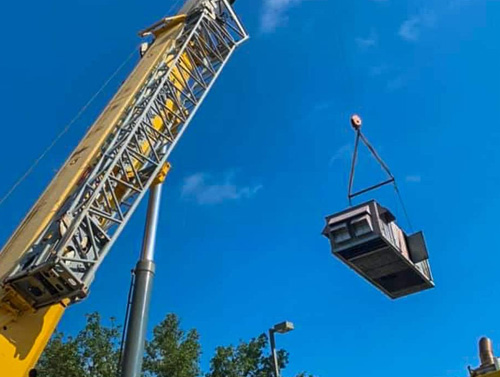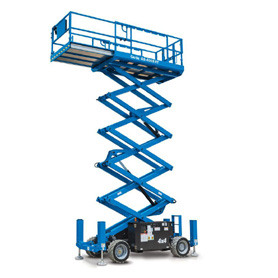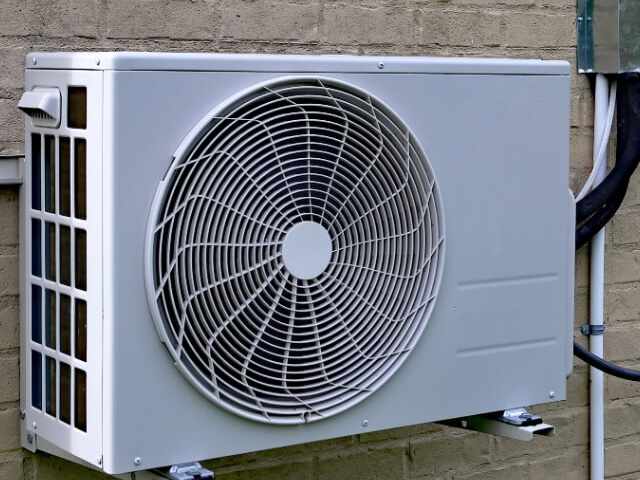So the weather is hot, and you do not know what to do with your air conditioning system. That happens.
If your house or apartment does not support an AC unit installed on the window, you must get it on the roof. Living in a one- or two-story house will not be a big job.
But, if you live in a high-rise building or apartment in a multi-storied building, you must summon up some courage to do this. It seems scary, but it is easily possible.
So here’s how to get AC on the roof without a crane or anything similar.
If you buy an AC unit from a reputed shop and they deliver it to your address, chances are they will bring their crane and help you install it.
The installation charges include the freight of getting it on top of your building or wherever you plan to install it.
If you have bought the AC from a store, but you want to install it yourself, and you are not paying for the delivery charges of the unit, then you will have to do the lifting yourself, then it will be your job to get it on top of the building or to the window where you intend to install it.

Why is a crane used?
Contractors that deal in HVAC have their crane lifts to do this job. The unit is heavy, so you can rely on a crane operator to do it for you.
However, if that is not a part of the services you have taken to install the AC in your house, then another way is to explore many other easy and simple options.
The crane makes it quick and easy to lift the AC and take it no matter how high the top of the building is. At times, it is also a safer option.
Especially if you do not want it to hit glass windows, panes, balconies, or other obstructions in the way.
What to consider without a crane?
Doing this without a crane is not as hard as it sounds.
You will need to be careful about a few things, though. Here’s what to keep in mind when taking the AC unit on the roof without a crane:
-
Make sure your lifting method is not wobbly or weak. You will need to ensure that the unit is being moved without damaging the items around it or the unit itself.
The unit must be packed when you lift it to prevent further damage to it or the things around it. The packaging allows extra padding to keep it safe.
-
You must be aware of the weight of the unit. You may want to ask someone for help if it is too heavy.
This will be essential if your building does not have an elevator or you live in a high-rise building with many floors.
-
Measure the dimensions. Measuring the dimensions lets you calculate whether you have enough space in the elevator or at the roof entrance to get the unit outside.
You do not want to carry the unit up and then find no space to be taken outside on the roof.
-
If you are taking the unit to your roof on the house from the attic sun visor or window, you must be aware of the area where you want to install it.
Ensuring there is enough stable place to keep the AC unit there will allow you to easily be placed once you and the unit are out of the window.
This will prevent any confusion or stress when carrying it out, as you will know exactly where to keep it.
-
Figure out the connection to the AC inside. The air conditioner will need an electric connection and piping for the water condensation to fall out.
For this, you must ensure that the unit is placed in an area where you can properly install it without compromising its functionality.
Ways to do this without a crane
There are many eccentric ways to do this and simpler ways to do this as well.
Many people try to carry their unit, among other heavy objects, to the roof of their house. Hence, there is more than one way to do this.
Getting a friend to help

A friend can help you divide the effort of carrying it up. The weight of an AC unit can be up to 80 kg. You will need the extra help you can get.
This is essential if you plan to use the fire escape or the staircase to take your unit upstairs. However, some units are as little as 20 kg.
It will depend on your needs and how much effort you are willing to invest. Extra help will not hurt in this case.
Using the staircase

If you use the staircase, you must ensure the unit is fully packed and easy to drag wherever needed.
It has to be easy to carry. You can take turns when taking it up the staircase.
It is a two-person job like heavy furniture if you do not want to hurt your back or shoulders. Never bend down to lift it using your knees to accentuate you.
This can be dangerous for the knee joint and give you bad knee pain. You must get in a squat position to bend down and get it.
Next, you should ensure the staircase is free from heavy traffic. Take it slow; no need to rush.
Using a rope

Some people have tried unique DIY methods, like tying the whole unit securely in ropes. Then, use an industrial rope to pull it up.
You will need equal body weight on top of the roof to pull it up.
This will allow the weight to be equally divided over two people, and rather than pulling it down, it will be able to pull up without dragging you down.
In this case, you must worry about dropping the rope if it is chafing or gets too heavy. Please note that you can not use a rope for a high-rise building.
You will need an industrial lifter for that. Tying the rope together may cause the knots to untie, which will likely drop your unit, causing a crash.
You also need to ensure the ropes are not loose at any end. Secondly, the people pulling it up must ensure the pull is consistent.
If you try to use an inconsistent method whereby you pull too hard and then hold the rope in one place to take a break, you may cause it to wobble.
This will cause a scene and much damage as the rope may hit the surrounding windows, pipes, or vents.
Using the lift

An easier way will be to use a building elevator. However, if you are trying to place this on your house roof, you may not have an elevator.
This is possible for a high-rise or multi-storied building, though. Once the unit reaches the top floor, you can easily drag it to the terrace and place it where it needs to be.
Using a large industrial fabric

Another way to pull or drag the unit is to use a large industrial-strength fabric that allows you to carry that much weight.
Once you have the fabric, you can spread it and place the unit on top.
Then, you can use both sides and all four corners to drag it around on the roof or in the elevator as needed without having to lift it every time.
Carrying it to your window

You can carry it to your window if you want it to be on top of your house.
Once it is there, find a place to keep it until you can install it or move it into any position.
Look into other machines.

If you do not want to hire a crane operator or crane itself, then you can also get a portable telescopic lifter or a Genie hoist to get it on top.
Some people like to use the portable electric lifter because it is easy to operate and can save costs.
Important considerations
You must be aware of loads falling off when using a crane or a manual tool to carry it on top of a building.
It is a common phenomenon that the unit load may cause damage or breakage.
You may be able to carry or pull it up, but loose ties and poor choices can cause the load to quickly unscramble, fall, crash, or hit itself into a wall or, worse – a window.
However, if you live way up on a floor, say twelve stories up, getting professional help installing and manning it up on the top floor is better.
The issue is that if you live in the center of the building. Still, you need to get the unit at the top of the building and be aware of the piping placement, electrical connections, placement, and installation process.
This is a tedious job for one person, whether professional or you do it yourself.
But, when you want to do it yourself and that too alone, you are likely not to be saving your costs. You are rather risking a lot of loss.
A professional can guide you through the installation and make it easier to do without any damage or issues.
Hiring a crane should not be an issue as a crane can fork it properly and carry it swiftly.
If you try many unique methods, you will likely risk a lot over it.
You may regret the work done and have to quit even if the unit is somehow transported to the top of the building.

Arthur is a skilled roof worker with over 10 years of experience in the industry. He started his career as an apprentice and worked his way up to become a foreman.
When he’s not working on roofs, John enjoys with his family or writing posts. He is also a passionate cyclist.

